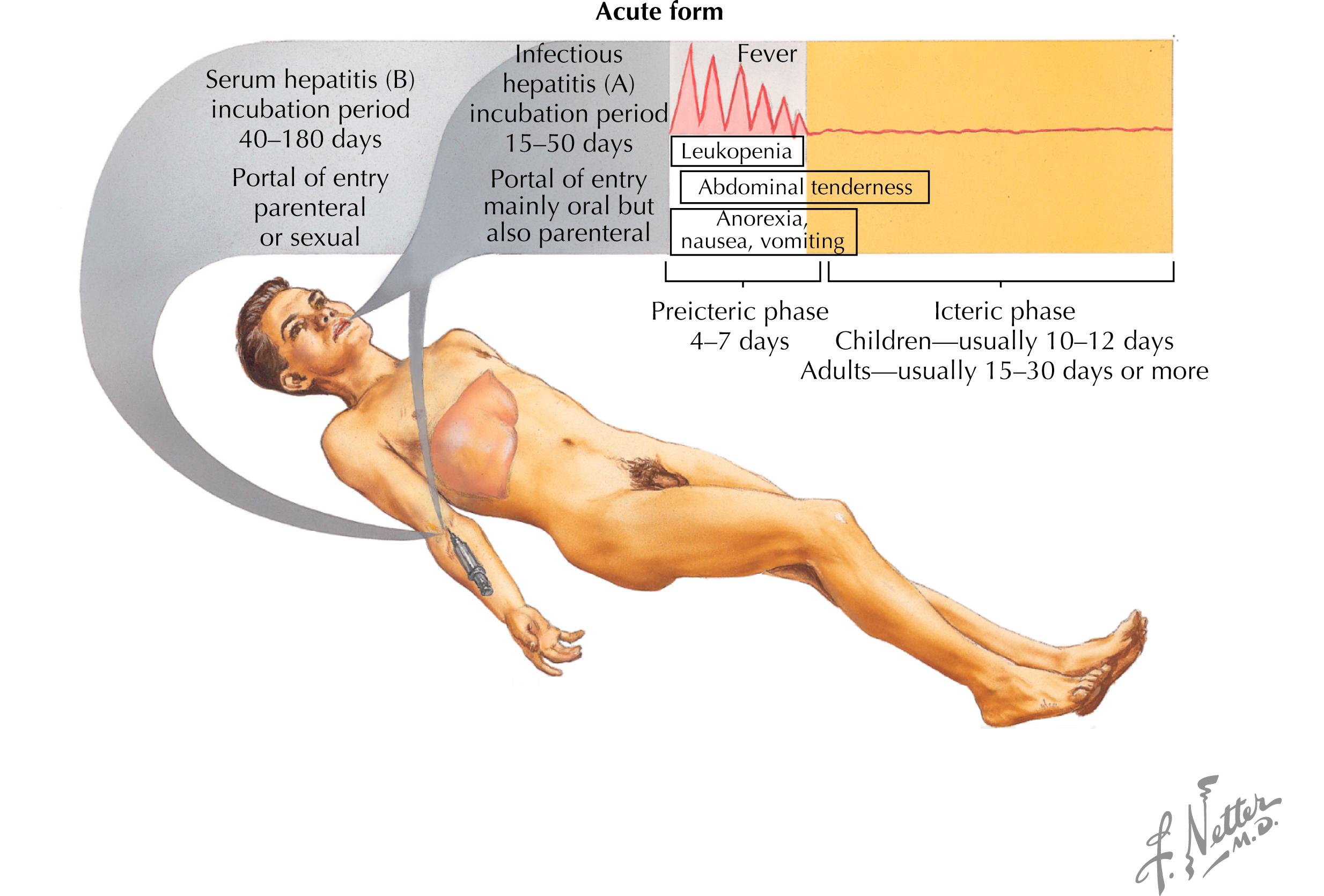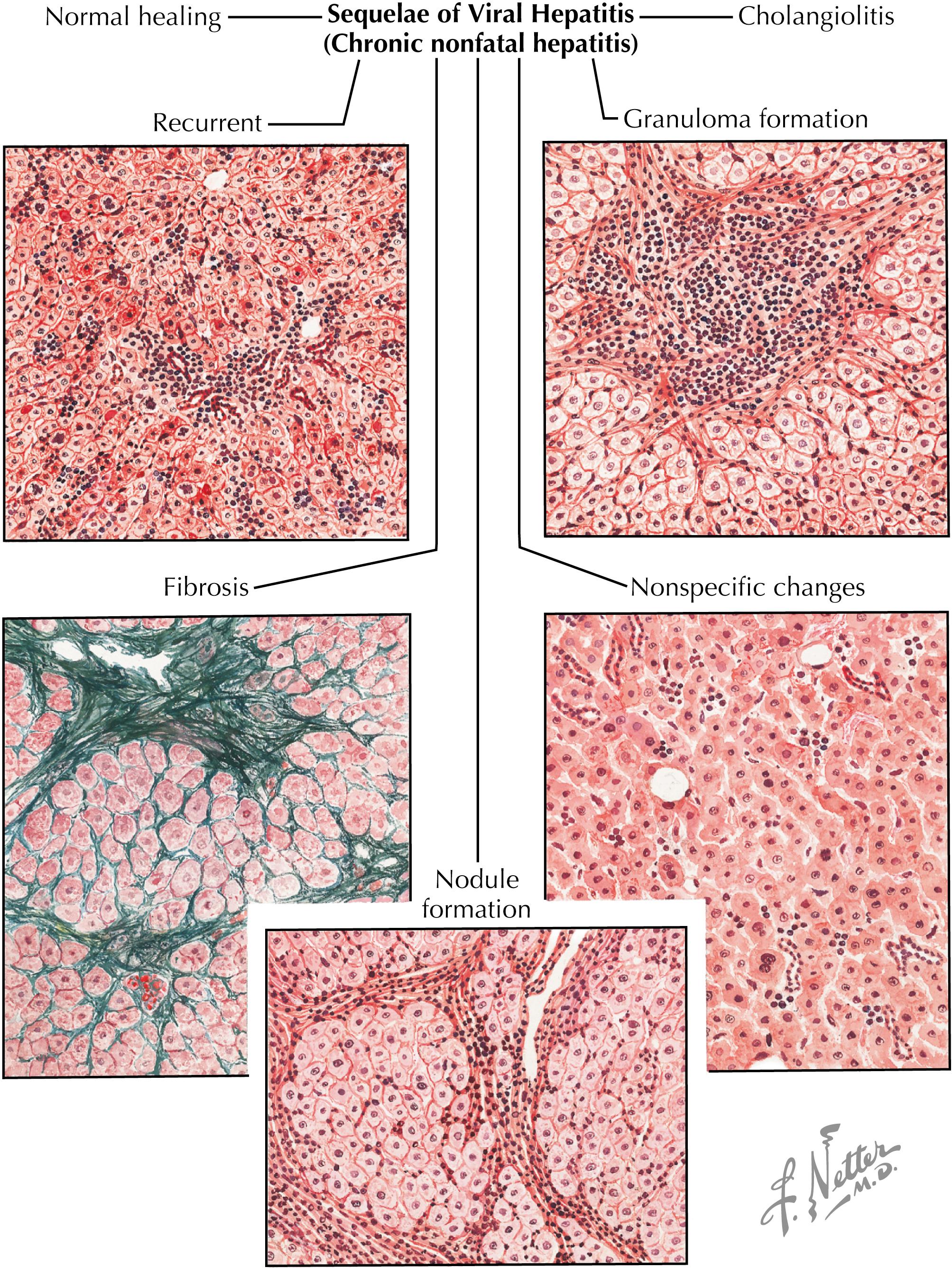Physical Address
304 North Cardinal St.
Dorchester Center, MA 02124
Hepatitis B infection is one of the most common global health problems. Persons with acute hepatitis B infection can be asymptomatic or present with hepatitis with or without jaundice. Most acute infections resolve without sequelae; however, progression to chronic infection may occur and the risk is inversely related to age at the time of acquisition of infection. This progression to chronic hepatitis B infection may result in cirrhosis or hepatocellular carcinoma. Treatment of acute hepatitis B infection is primarily supportive. Patients with chronic hepatitis B infection should undergo routine monitoring for disease progression and to determine appropriate treatment initiation. Treatment includes nucleos(t)ide analogues and interferon and is usually managed by liver specialists. Hepatitis B is preventable with vaccination, which is universally recommended for infants in most industrialized nations as well as in many low-resource areas.
A 12-year-old boy who recently immigrated from a low-resource country presented to the clinic with fatigue, vague abdominal pain, and nausea without fever. Physical examination was notable for right-upper-quadrant tenderness without jaundice. Laboratory testing revealed elevated liver enzymes, positive HBsAg, negative anti-HBs antibody, positive total anti-HBc antibody, negative IgM anti-HBc antibody, positive anti-HBe antibody, and a high load of hepatitis B virus (HBV). Does he have acute or chronic hepatitis? Does he need to be started on treatment?
COMMENT: He has chronic hepatitis B supported by the presence of HBsAg and negative IgM anti-HBc. Both total anti-HBc and anti-HBe can be present in resolved and chronic infection, but lack of anti-HBs antibody supports chronic infection. His need for treatment is based on the degree of elevation of liver enzymes.
HBV is a partially double-stranded deoxyribonucleic acid (DNA) virus of the Hepadnaviridae family with hepatitis B core antigen (HBcAg), surrounded by hepatitis B surface antigen (HBsAg). Humans are the only known host, and people with chronic hepatitis B infection are the primary reservoir, with the liver being the primary site of HBV replication.
In the United States, the Centers for Disease Control and Prevention (CDC) estimates the actual number of acute hepatitis B cases annually as close to 22,100. In the United States, chronic hepatitis B has a reported estimated prevalence (2011 to 2016) around 862,000. Globally, approximately 257 million people have chronic hepatitis B. The majority of persons with chronic HBV infections in the United States are immigrants, have immigrant parents, or became exposed through other close household contacts. Immunosuppression increases the risk of progression to chronic infection as well. Since 1990 the incidence of HBV infection has declined in all age groups in the United States, with the largest decline (approximately 98%) occurring in children younger than 15 years of age, largely attributable to use of hepatitis B vaccination during infancy.
In an infected person, HBV is present in all body fluids, although semen, vaginal secretions, and serum are primarily infectious. HBV is highly infectious, can be transmitted in the absence of visible blood, and remains infectious on environmental surfaces for at least 7 days. Hepatitis B is transmitted parenterally (e.g., by needlestick or sharing of needles), perinatally, sexually, and less commonly horizontally. Infants are most often infected from exposure to the blood of an infected mother during the birth process. Horizontal transmission is less well defined but appears to occur rarely in households where one or more members have chronic infection. It is important to remember that HBV is not spread through food or water, the sharing of eating utensils, breastfeeding, hugging, kissing, hand holding, coughing, or sneezing.
Other risk factors for infection include high-risk sexual activity (e.g., multiple partners, traumatic contact, men who have sex with men) and injection drug use (IDU). Transmission of HBV from the transfusion of blood or blood products is rare because of donor screening and viral inactivation procedures. Even after intensive investigation, up to 40% of patients with acute hepatitis B infection have no identifiable risk factors. Many international adoptees come from geographic areas with a high prevalence of HBV infection. Because infected children may have few or no symptoms, all internationally adopted children should be screened.
The incubation period is generally 3 months but ranges from 6 weeks to 6 months. The clinical features of acute HBV infection depend partly on age. Most children under age 5 years and newly infected immunosuppressed adults are generally asymptomatic, whereas 30% to 50% of persons 5 years of age or older have signs and symptoms. The manifestations of infection range from being asymptomatic to nausea, vomiting, abdominal pain, fever, dark urine, clay-colored stools, hepatomegaly, splenomegaly, and jaundice ( Fig. 15.1 ). Malaise and anorexia may precede jaundice by 1 to 2 weeks. Fulminant HBV infection is uncommon (<1%) but often results in death or liver failure, necessitating liver transplantation. Recovery is gradual, with fatigue and malaise usually resolving within a few weeks or months.

Chronic HBV infection is defined as persistence of HBsAg in serum for at least 6 months. It may cause no symptoms or may result in chronic active hepatitis and cirrhosis ( Fig. 15.2 ). Individuals with chronic active hepatitis often have fever, abdominal pain, and malaise. Advanced disease may lead to spider nevi, ascites, coagulopathy, and esophageal varices if progression to cirrhosis occurs. Chronic HBV carriers are at risk of developing hepatocellular carcinoma, the most common infectious cause of liver cancer.

Extrahepatic manifestations can occur in 10% to 20% of chronic HBV infections and may include glomerulonephritis/membranous nephropathy, serum sickness, arthralgias and arthritis, and rashes such as urticaria, papular acrodermatitis (Gianotti-Crosti), and polyarteritis nodosa.
Patients with acute HBV infection have elevated transaminases and bilirubin. The diagnosis is most commonly confirmed by the use of HBV-specific antigens and antibodies, as described in Table 15.1 . The presence of hepatitis E antigen (HBeAg) is a marker of increased infectivity in those with acute or chronic infection.
| Clinical State | HBsAg | Anti-HBs | IgM (anti-HBc) | Total Anti-HBc | HBe | Anti-HBe |
|---|---|---|---|---|---|---|
| Susceptible | − | − | − | − | − | − |
| Immunized | − | + | − | − | − | − |
| Acute infection | + | − | + | + | + | − |
| Resolved infection | − | + | − | + | − | + |
| Chronic infection | + | − | − | + | +/− | + |
Polymerase chain reaction (PCR) assays are available to detect and quantify hepatitis B DNA, which may be useful for monitoring disease progression.
Become a Clinical Tree membership for Full access and enjoy Unlimited articles
If you are a member. Log in here